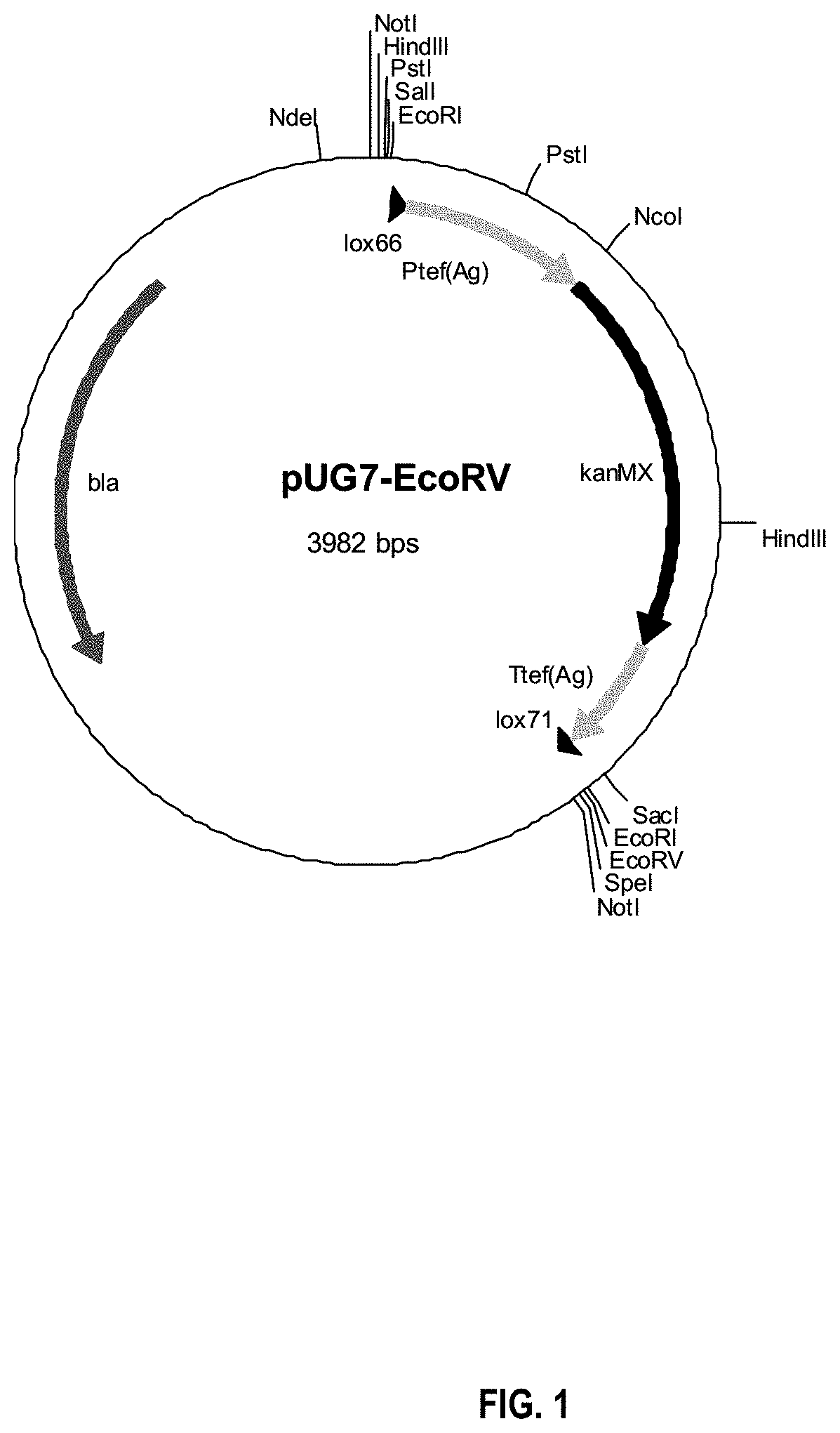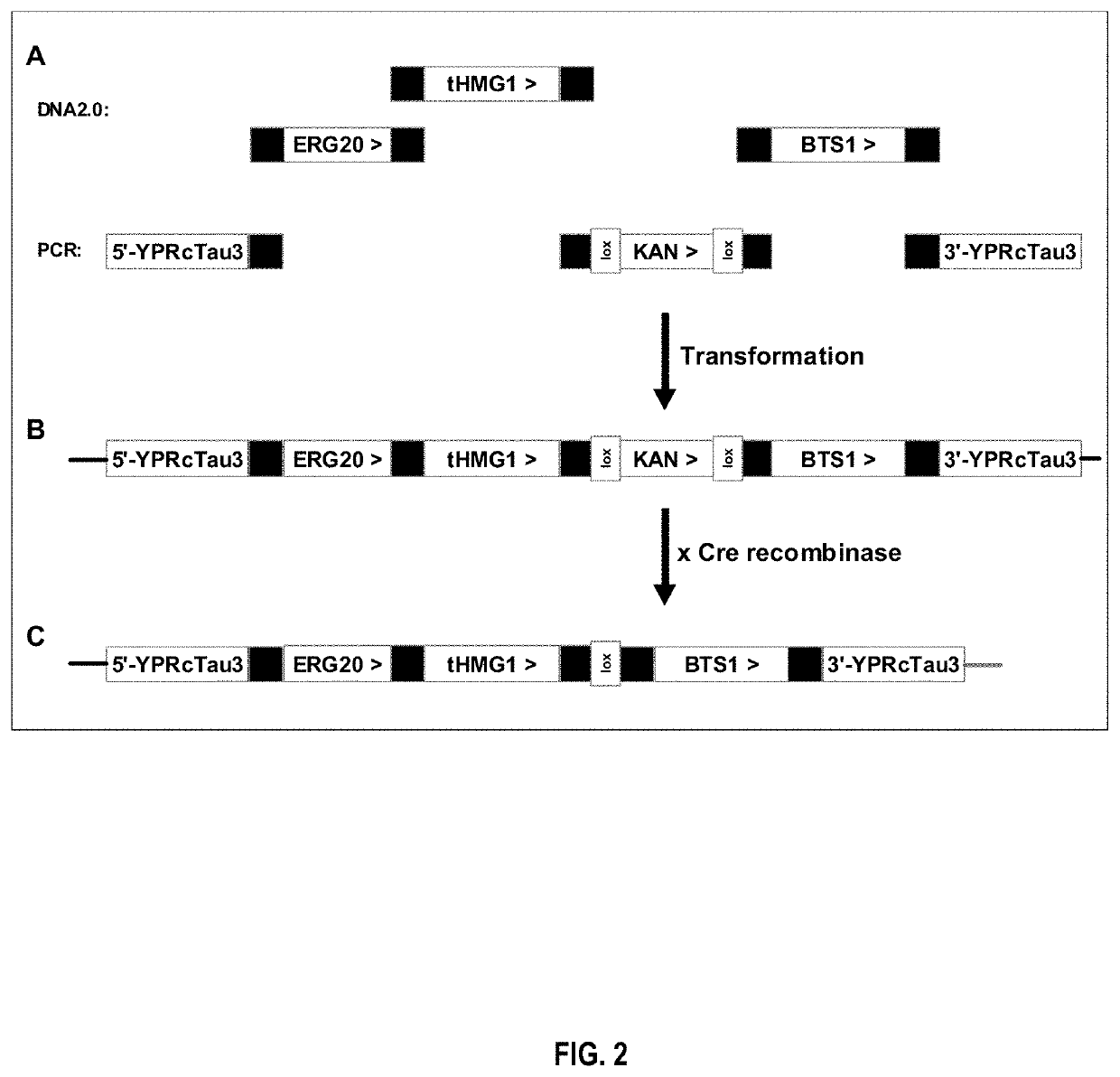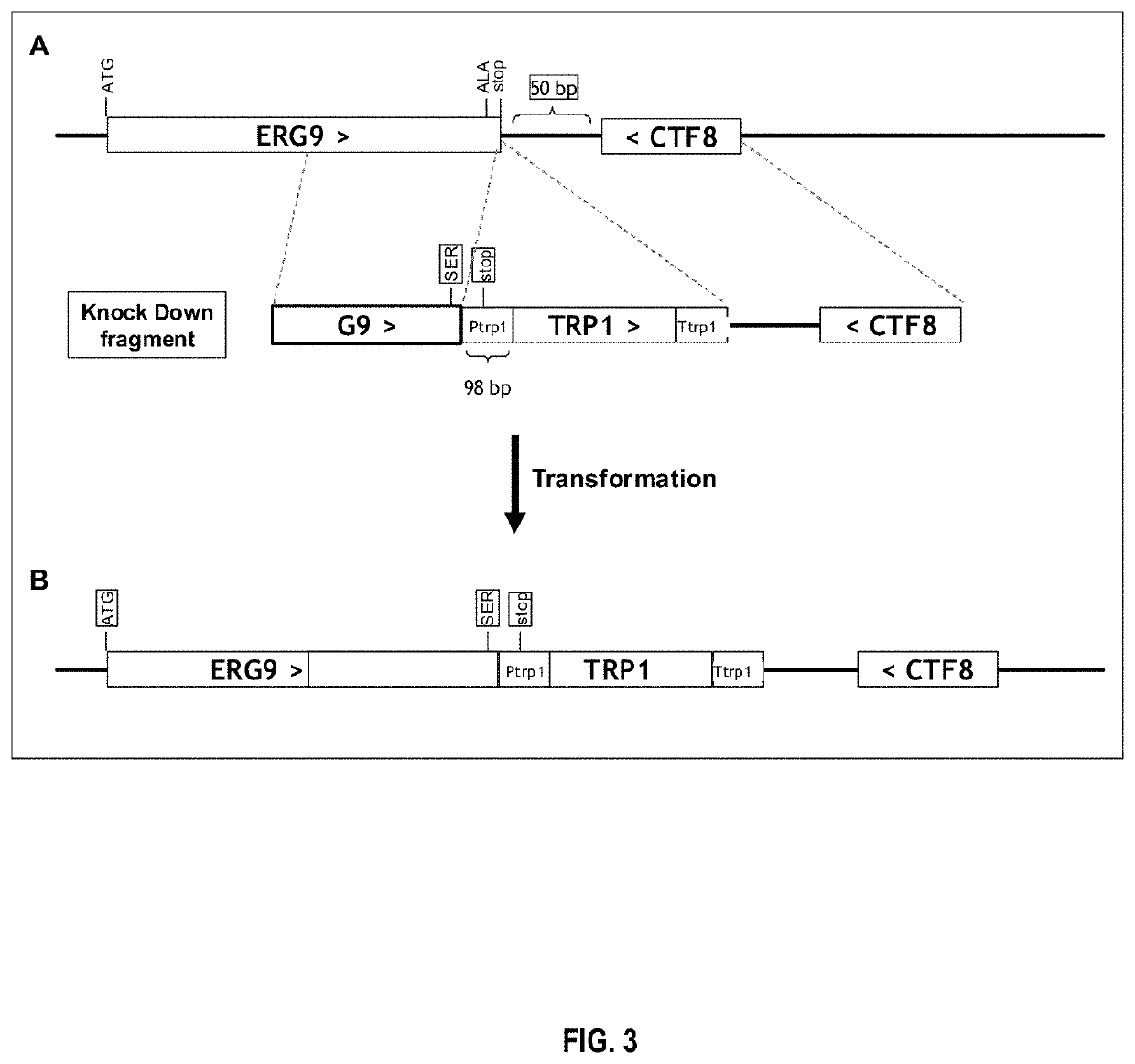Microorganisms for diterpene production
a technology of microorganisms and diterpenes, applied in the direction of lyases, transferases, peptides, etc., can solve the problems of large land area, long time, variable yield,
- Summary
- Abstract
- Description
- Claims
- Application Information
AI Technical Summary
Benefits of technology
Problems solved by technology
Method used
Image
Examples
example 2
Knock Down of Erg9
[0358]For reducing the expression of Erg9, an Erg9 knock down construct was designed and used that contains a modified 3′ end, that continues into the TRP1 promoter driving TRP1 expression.
[0359]The construct containing the Erg9-KD fragment was transformed to E. coli TOP10 cells. Transformants were grown in 2PY (2 times Phytone peptone Yeast extract), sAMP medium. Plasmid DNA was isolated with the QIAprep Spin Miniprep kit (Qiagen) and digested with Sall-HF (New England Biolabs). To concentrate, the DNA was precipitated with ethanol. The fragment was transformed to S. cerevisiae, and colonies were plated on mineral medium (Verduyn et al, 1992. Yeast 8:501-517) agar plates without tryptophan. Correct integration of the Erg9-KD construct was confirmed with diagnostic PCR and sequencing. The schematic of performed transformation of the Erg9-KD construct is illustrated in FIG. 3. The strain was named STV003.
example 3
Over-Expression of UGT2 1a
[0360]For over-expression of UGT2_1a, technology was used as described in co-pending patent application nos. PCT / EP2013 / 056623 and PCT / EP2013 / 055047. The UGT2_1a was ordered as a cassette (containing homologous sequence, promoter, gene, terminator, homologous sequence) at DNA2.0. For details, see Table 4. To obtain the fragments containing the marker and Cre-recombinase, technology was used as described in co-pending patent application no. PCT / EP2013 / 055047. The NAT marker, conferring resistance to nourseothricin was used for selection.
TABLE 4Composition of the over-expression constructPromoterORFTerminatorPgk1 UGT2_1a Adh2 (SEQ ID NO: 204)(SEQ ID NO: 87)(SEQ ID NO: 213)
[0361]Suitable primers were used for amplification. To amplify the 5′ and 3′ integration flanks for the integration locus, suitable primers and genomic DNA from a CEN.PK yeast strain was used.
[0362]S. cerevisiae yeast strain STV003 was transformed with the fragments listed in Table 5, and th...
example 4
Over-Expression of Production Pathway to RebA: CPS, KS, KO, KAH, CPR, UGT1, UGT3 and UGT4
[0364]All pathway genes leading to the production of RebA were designed to be integrated in one locus using technology described in co-pending patent application no. PCT / EP2013 / 056623. To amplify the 5′ and 3′ integration flanks for the integration locus, suitable primers and genomic DNA from a CEN.PK yeast strain was used. The different genes were ordered as cassettes (containing homologous sequence, promoter, gene, terminator, homologous sequence) at DNA2.0 (see Table 5 for overview). The DNA from DNA2.0 was dissolved to 100 ng / μl. This stock solution was further diluted to 5 ng / μl, of which 1 μl was used in a 50 μl-PCR mixture. The reaction contained 25 pmol of each primer. After amplification, DNA was purified with the NucleoSpin 96 PCR Clean-up kit (Macherey-Nagel) or alternatively concentrated using ethanol precipitation.
TABLE 6Sequences used for production pathway to RebAPromoterORFSEQ ID...
PUM
| Property | Measurement | Unit |
|---|---|---|
| temperature | aaaaa | aaaaa |
| temperature | aaaaa | aaaaa |
| temperature | aaaaa | aaaaa |
Abstract
Description
Claims
Application Information
 Login to View More
Login to View More - R&D
- Intellectual Property
- Life Sciences
- Materials
- Tech Scout
- Unparalleled Data Quality
- Higher Quality Content
- 60% Fewer Hallucinations
Browse by: Latest US Patents, China's latest patents, Technical Efficacy Thesaurus, Application Domain, Technology Topic, Popular Technical Reports.
© 2025 PatSnap. All rights reserved.Legal|Privacy policy|Modern Slavery Act Transparency Statement|Sitemap|About US| Contact US: help@patsnap.com



